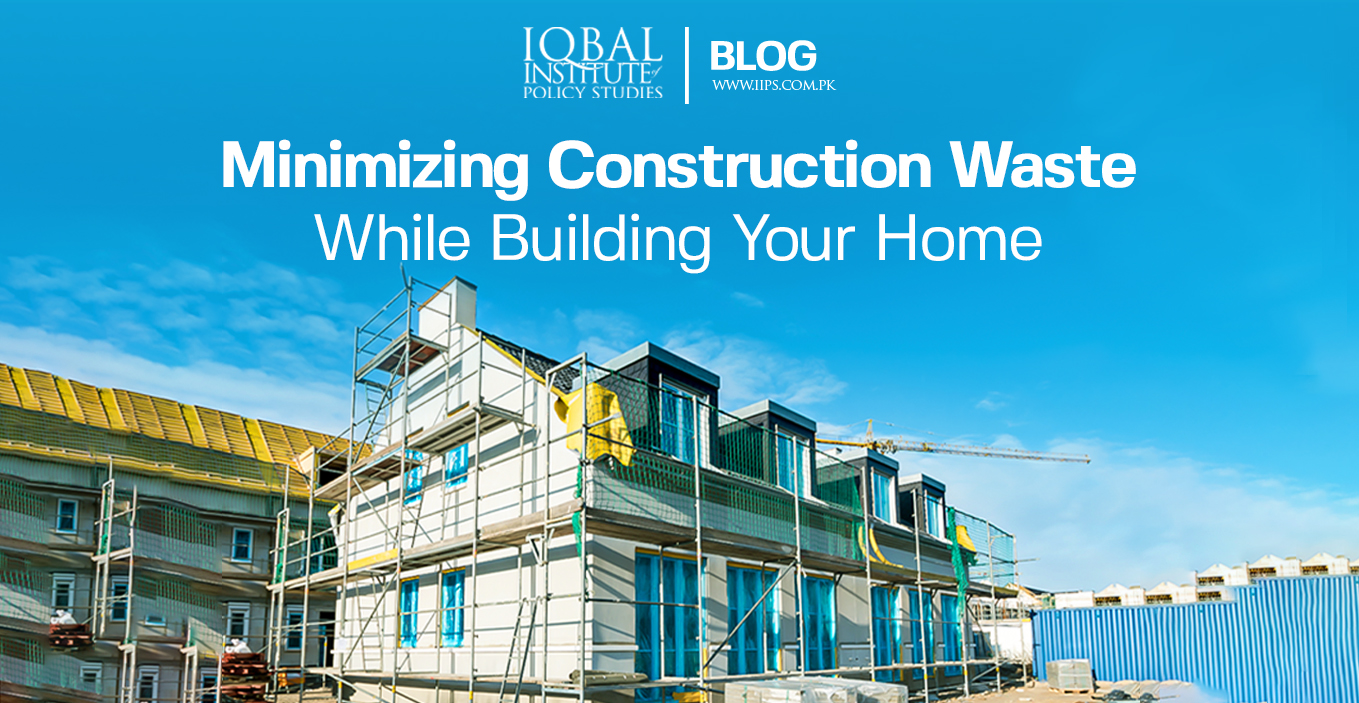
Introduction
Construction waste is one of the largest contributors to global greenhouse gas emissions and subsequently climate change. Local governments, policymakers, and climate activists advocate reducing construction waste to reduce its environmental impacts. During the construction of a building or infrastructure, it is estimated that 30% of the raw material is wasted and not consumed constructively, ending up in landfills or harming the environment in one form or another.
Today, most people have become conscious of their carbon footprint or their actions’ environmental impact on the planet. As a result, home investors seek sustainable methods of construction to reduce the environmental and economic cost of building their houses.
In this blog, we show home builders how much construction raw material is wasted on-site and how to minimise this waste while building a house.
Regular Construction Waste Generated During Traditional Homes
Homebuilders are often found throwing away material that has been damaged or worn out by the weather. As a result, millions of tons of construction waste end up in landfills every year. According to the Environmental Protection Agency, 40% of the solid waste in most developed countries ends up in landfills. In addition, the majority of the construction waste comes from houses constructed based on traditional building construction methods.
According to The National Association of Home Builders, the prime home building organisation in the United States, an estimated 8000 pounds of waste material is sent to landfills when building a 2000 square foot house. The unused materials, extra parts ordered, and some parts that don’t fit, all result in creating this hefty amount of waste. If no construction project is being developed nearby, the unused waste materials are dumped into landfills.
The majority of the 8000 pounds of waste material dumped consists of wood, cardboard, and drywall. Builders who are experts in minimising construction waste claim that most waste dumped is reusable or recycled.
Benefits of Reducing your Construction Waste
Although more homebuilders and investors are becoming conscious of minimising their waste, awareness regarding the benefits of minimising waste while building a house cannot be underestimated.
Reduced price of construction
A waste reduction-based approach to home building can significantly reduce construction prices. Builders often overestimate the need for raw materials like wood and drywall and order an excess of it. If the planning and estimation part of the home-building process is done properly, it can save a significant amount of money in the home building process.
Conserves resources
The construction process utilises several natural resources that are depleting at an accelerated rate. As the human population grows, the number of natural resources reduces; therefore, one of the biggest benefits of cutting down construction waste during building is the conservation of natural resources.
Potential of reuse and recycling
Benefits of reducing waste while building a house are present in the recycling and waste-reusing process. With a significant proportion of construction waste reused or recycled, the construction industry can save the material for future projects. Several construction materials can be recycled, including asphalt pavement, gravel and aggregate products, concrete, masonry scrap and rubble, metals, clean wood, plastics, and insulation materials.
Measures to Reduce Waste
Planning and estimation
Experts suggest that planning the waste-reduction strategy before building a house can significantly decrease the amount of waste generated. Planning the construction of a house is important as it reduces the chances of mistakes, which results in less waste on the construction site. While planning, care should be taken to the amount of material ordered. In addition, home builders should conduct regular inventory checks to know what is needed or what is extra. Anticipating waste generation is also important in the planning process. Builders should place the appropriate number of recycling and reuse bins on the construction site.
Deconstruction Before Demolition
If a building/infrastructure is already present on a construction site and a new one needs to be built, a soft tear down approach is more waste friendly than the full demolition of a building. This will allow the builders to reuse the material from the deconstructed material, thereby reducing waste in construction. Deconstruction before demolition of a building saves money as the on-site material can be used for construction. In addition, deconstruction has the plus point of being more environmentally friendly as the process releases less toxic dust or heavy metal compounds into the surrounding air.
Communicating the waste-reduction strategy to the workforce
This is also an important step in the process as the workers primarily deal with construction materials that can significantly reduce on-site waste generation while building a house. Workers should be advised to keep all scrap pieces of materials if a part is needed later in the project. Workers should identify materials that can be potentially reused or recycled to maximise waste minimisation and maximise waste reuse or recycling.
Conclusion
A majority of home investors neglect the environmental cost of building their houses. However, with growing environmental concerns, home investors are increasingly becoming conscious of their actions. Appropriate planning, accurate estimations, identification of recyclable and reusable material, and adopting a holistic construction-waste reduction strategy can significantly reduce on-site waste generation.

Leave a Reply